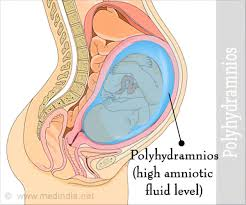Which medication should the nurse question for a client admitted with an exacerbation of chronic obstructive pulmonary disease (COPD)?
Ceftriaxone, with a white blood cell count of 16,000 u/L.
Zafirlukast, with an AST of 30 units/L and ALT of 20 units/L.
Theophylline, with a theophylline level of 21 mg/dL.
Prednisone, with a glucose level of 110 mg/dL.
The Correct Answer is C
Choice A Reason
Ceftriaxone is an antibiotic that may be prescribed during COPD exacerbations to treat or prevent infection. A white blood cell count of 16,000 u/L indicates an elevated level, which could be a response to infection. Therefore, ceftriaxone would be appropriate, and there is no need to question this medication based on the white blood cell count.
Choice B Reason
Zafirlukast is a leukotriene receptor antagonist used for the prophylactic treatment of asthma, and it may be used off-label for COPD. AST and ALT levels are liver enzymes, and the values provided (AST of 30 units/L and ALT of 20 units/L) are within normal ranges. Thus, there is no immediate concern regarding liver function that would prompt the nurse to question the use of zafirlukast.
Choice C Reason
Theophylline is a bronchodilator used in the treatment of COPD. However, a theophylline level of 21 mg/dL is above the therapeutic range, which is generally considered to be 5-15 mg/dL. Levels above 20 mg/dL are associated with toxicity and can lead to serious side effects such as seizures or arrhythmias. Therefore, the nurse should question this medication due to the high theophylline level.
Choice D Reason
Prednisone is a corticosteroid that may be used to reduce inflammation during COPD exacerbations. A glucose level of 110 mg/dL is slightly elevated but may be expected as corticosteroids can increase blood sugar levels. This would not typically be a reason to question the use of prednisone unless the patient has poorly controlled diabetes or other specific contraindications.
Nursing Test Bank
Naxlex Comprehensive Predictor Exams
Related Questions
Correct Answer is D
Explanation
Choice A reason:
While polyhydramnios can be associated with congenital anomalies or fetal distress, it is not a direct indication of these conditions. Polyhydramnios refers specifically to the excessive accumulation of amniotic fluid. Congenital anomalies may lead to polyhydramnios if they affect the fetus's ability to swallow and process amniotic fluid normally, but the presence of polyhydramnios alone does not confirm these conditions.
Choice B reason:
Elevated levels of alpha-fetoprotein (AFP) in the amniotic fluid can be indicative of neural tube defects or other fetal abnormalities, but they are not a defining characteristic of polyhydramnios. Normal AFP levels in amniotic fluid at 15 to 21 weeks' gestation range from 10 to 150 ng/ml. Polyhydramnios is diagnosed based on the volume of amniotic fluid, not the AFP levels.
Choice C reason:
Carrying more than one fetus can lead to an increased amount of amniotic fluid, potentially resulting in polyhydramnios. However, the diagnosis of polyhydramnios itself does not imply a multiple gestation pregnancy. It simply indicates that there is more amniotic fluid than usual.
Choice D reason:
Polyhydramnios is defined as an excessive amount of amniotic fluid. It is typically diagnosed when the amniotic fluid index (AFI) exceeds 24 cm or the single deepest pocket (SDP) measures more than 8 cm. This condition can occur due to various reasons, including fetal anomalies, maternal diabetes, and other medical conditions.

Correct Answer is D
Explanation
Choice A reason:
Dysuria, or painful urination, is a common symptom of cystitis and indicates inflammation of the bladder, often caused by a urinary tract infection (UTI). While it is a symptom to monitor, it does not necessarily indicate progression of the infection.
Choice B reason:
An increased frequency of urination can be a symptom of cystitis due to irritation of the bladder lining. However, like dysuria, it is a common symptom of a UTI and may not signify that the infection is worsening.
Choice C reason:
Pyuria, the presence of white blood cells in the urine, and hematuria, the presence of blood in the urine, are both indicators of inflammation and infection. These symptoms can occur with cystitis but are also not specific to the progression of the infection.
Choice D reason:
Fever is a systemic response to infection and can indicate that a UTI, such as cystitis, is worsening or spreading, possibly to the kidneys, which is known as pyelonephritis. Monitoring for fever is important because it may necessitate more aggressive treatment, such as antibiotics, and possibly hospitalization if the infection is severe.
Whether you are a student looking to ace your exams or a practicing nurse seeking to enhance your expertise , our nursing education contents will empower you with the confidence and competence to make a difference in the lives of patients and become a respected leader in the healthcare field.
Visit Naxlex, invest in your future and unlock endless possibilities with our unparalleled nursing education contents today
Report Wrong Answer on the Current Question
Do you disagree with the answer? If yes, what is your expected answer? Explain.
Kindly be descriptive with the issue you are facing.
